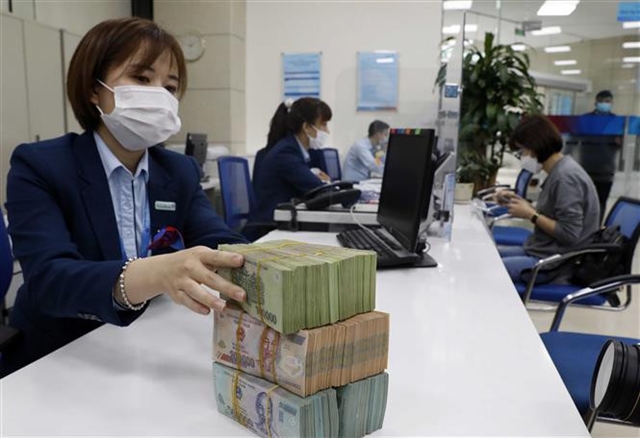A notable driver was the continued surge in individual deposits, which hit a record high of nearly VNĐ7.5 quadrillion, up 5.73 per cent since the beginning of the year.

HÀ NỘI — Total deposits at credit institutions in Việt Nam reached nearly VNĐ15 quadrillion (US$590.6 billion) by the end of March, a 1.83 per cent increase from the previous month, according to the latest data from the State Bank of Vietnam (SBV).
A notable driver was the continued surge in individual deposits, which hit a record high of nearly VNĐ7.5 quadrillion, up 5.73 per cent since the beginning of the year.
In March alone, individuals deposited an additional VNĐ103.8 trillion, reflecting a strong tendency to hold cash despite persistently low interest rates.
Meanwhile, deposits from economic enterprises amounted to slightly more than VNĐ7.5 quadrillion, down 1.92 per cent compared to the end of 2024. However, compared to February, this figure increased by over VNĐ158 trillion, indicating a recovery in business confidence.
As of the end of March, interest rates offered by commercial banks on Vietnamese đồng deposits remained largely stable. Rates ranged from 0.1 to 0.2 per cent per annum for non-term and under-one-month deposits; 3.1 to 4 per cent for terms of one to under six months; 4.5 to 5.4 per cent for six to 12 months; 4.8 to 6 per cent for 12 to 24 months; and 6.9 to 7.1 per cent for terms longer than 24 months.
Analysts at MBS Securities forecast a mild uptick in deposit interest rates by year-end, supported by positive economic growth prospects and expectations that credit growth could meet or exceed the 16 per cent annual target.
MBS projects credit expansion for the year to reach 17-18 per cent, driven by a rebound in manufacturing, domestic consumption and faster disbursement of public investment.
Similarly, ABS Research noted that with liquidity and manageable inflation pressure, interest rates will likely remain low or decline slightly in the near term. However, upward pressure could emerge from gradually improving credit demand and rising investment in real estate and the stock market.
Overall, average deposit interest rates in the first quarter remained flat, edging up only 0.08 per cent. Meanwhile, lending rates fell by 0.4 per cent compared to the end of 2024, reflecting efforts by the banking sector to support businesses and foster economic recovery. — VNS





